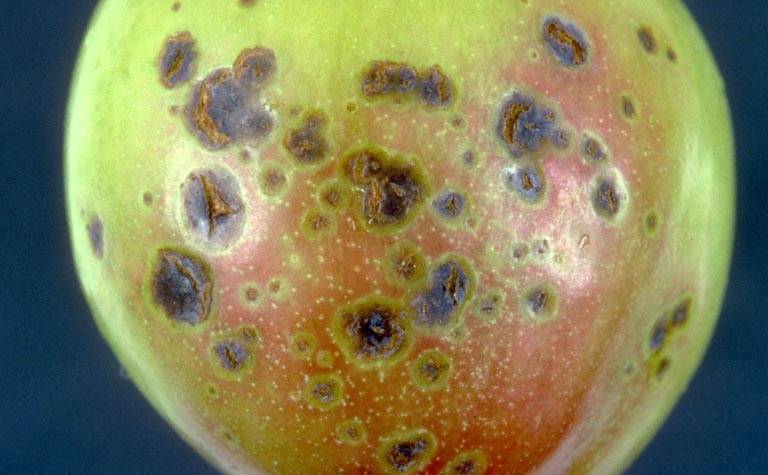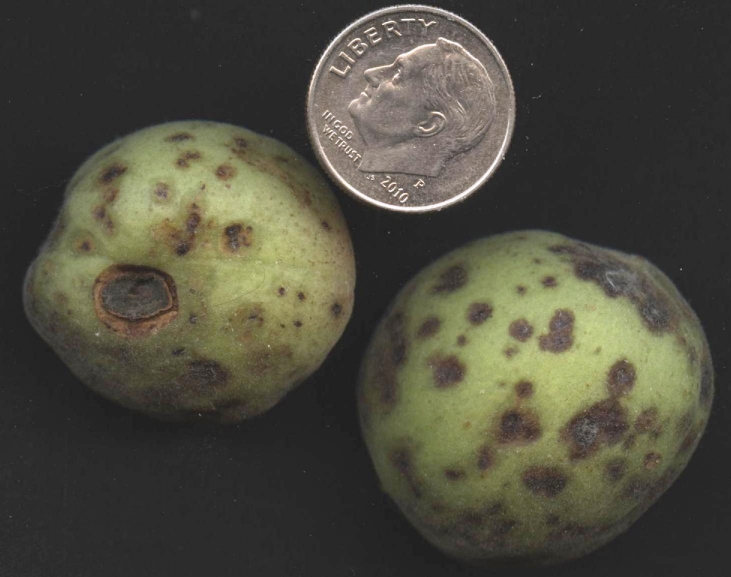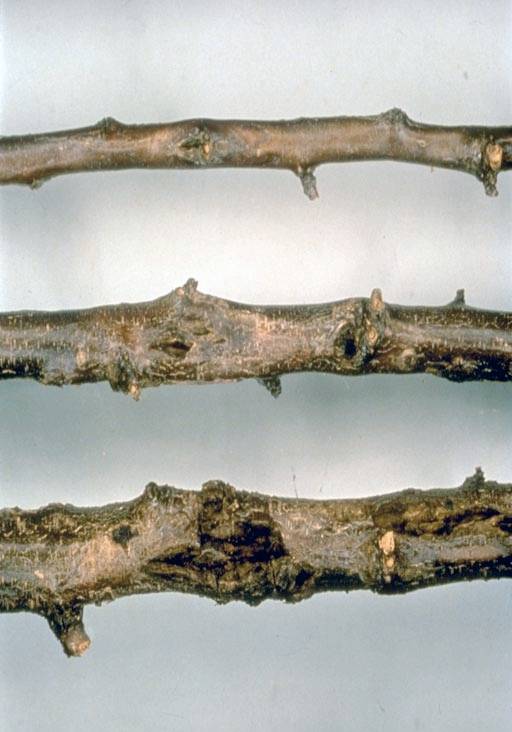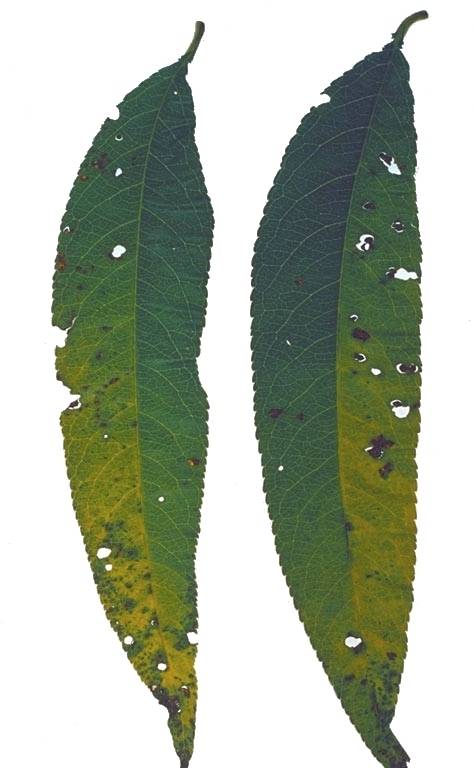Bacterial Spot of Stone Fruits
 Causal Agent
Causal Agent
Xanthomonas pruni (synonym X. campestri pv. pruni or X. arbicola pv. pruni)
Hosts
Almond, Apricot, Nectarine, Peach and Plum.
Symptoms
The pathogen causes spotting of the leaves, fruit and new twigs. If the disease has
been a problem in past seasons, cankers may be visible on older limbs. Leaf spots
appear as angular lesions which are often delimited by veins. It may be easier to
see the leaf spots if the leaves 

Control


